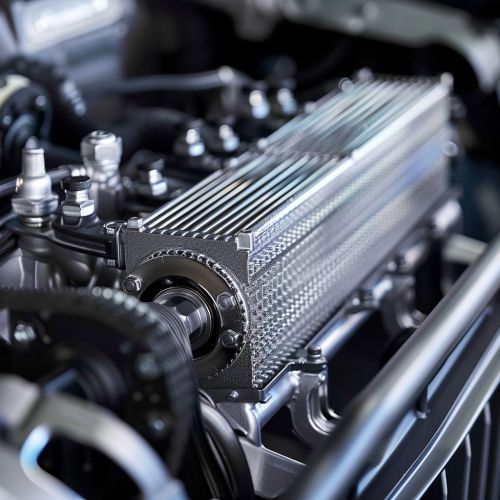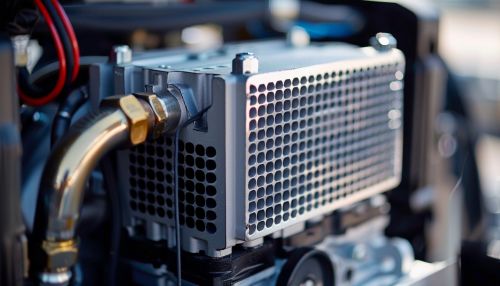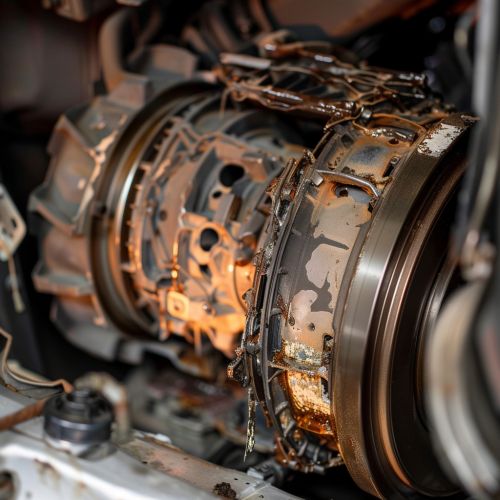Transmission Cooling
Overview
A transmission cooling system is an integral part of any vehicle's powertrain. It is designed to maintain optimal operating temperature for the transmission, which is crucial for its efficient functioning and longevity. The system works by dissipating heat generated by the transmission during operation, thus preventing overheating and subsequent damage.


Function
The primary function of a transmission cooling system is to regulate the temperature of the transmission fluid. This fluid serves multiple purposes: it lubricates the moving parts of the transmission, serves as a hydraulic fluid to enable gear shifts, and helps to cool the transmission by absorbing heat and carrying it away from the internal components. However, the fluid itself can become too hot during operation, especially under heavy loads or high ambient temperatures. This is where the cooling system comes into play.
Components
A typical transmission cooling system consists of several key components:
- Transmission Fluid: This is a special type of oil designed to withstand high temperatures and pressures. It is the lifeblood of the transmission, providing lubrication, enabling gear shifts, and aiding in heat dissipation.
- Transmission Cooler: This is the main component of the cooling system. It is usually a type of heat exchanger that cools the transmission fluid by transferring its heat to another medium, typically the air or the engine coolant.
- Cooling Lines: These are the pipes or hoses that carry the hot transmission fluid from the transmission to the cooler, and then return the cooled fluid back to the transmission.
- Pump: This component circulates the transmission fluid through the system. It is usually driven by the engine or the transmission itself.
- Thermostat: This device regulates the flow of transmission fluid through the cooler. It remains closed until the fluid reaches a certain temperature, at which point it opens to allow the fluid to flow through the cooler.
Types of Transmission Coolers
There are several types of transmission coolers, each with its own advantages and disadvantages:
- Air-Cooled: This is the simplest and most common type of transmission cooler. It uses the airflow from the vehicle's movement and the cooling fan to dissipate heat. However, its cooling capacity is limited and it may not be sufficient for heavy-duty applications.
- Liquid-Cooled: This type of cooler is integrated into the vehicle's radiator. It uses the engine coolant to cool the transmission fluid. While it offers better cooling capacity than an air-cooled cooler, it can also increase the load on the engine's cooling system.
- Hybrid: This is a combination of air and liquid cooling. It offers the best of both worlds, providing superior cooling capacity while minimizing the load on the engine's cooling system.
Importance of Transmission Cooling
The importance of transmission cooling cannot be overstated. Overheating is one of the leading causes of transmission failure. It can cause the transmission fluid to break down, leading to inadequate lubrication and hydraulic function. It can also cause internal components to warp or seize, leading to mechanical failure.


Maintenance
Regular maintenance of the transmission cooling system is essential for its proper functioning. This includes checking the level and condition of the transmission fluid, inspecting the cooler and cooling lines for leaks or damage, and replacing the fluid and components as necessary. It is generally recommended to have the system serviced by a professional mechanic.
